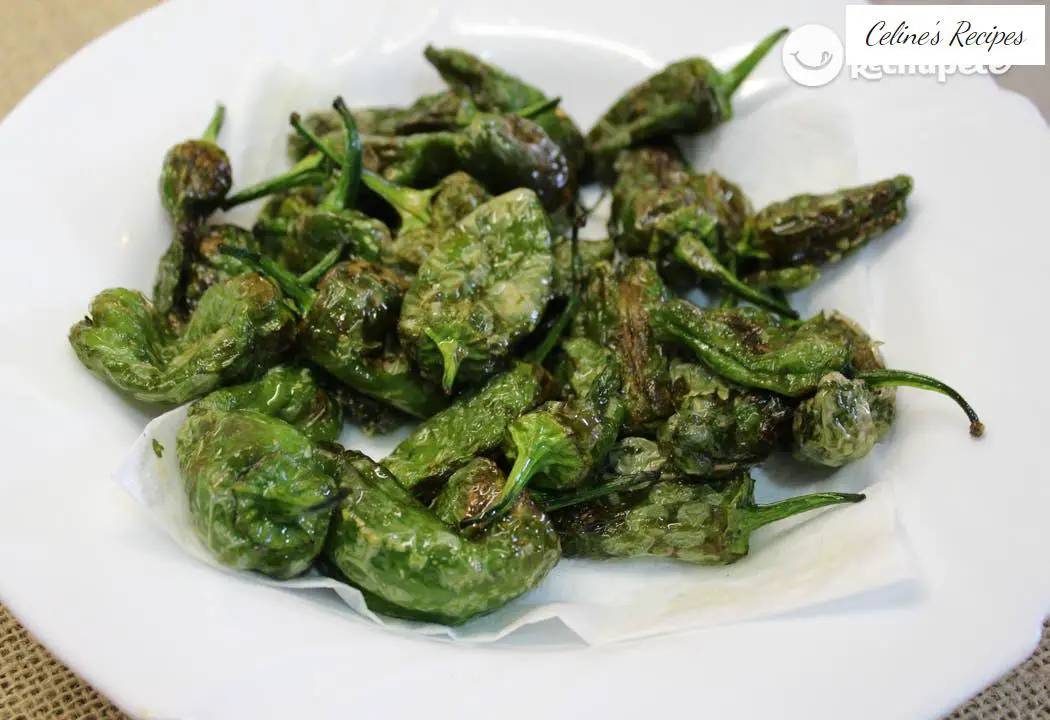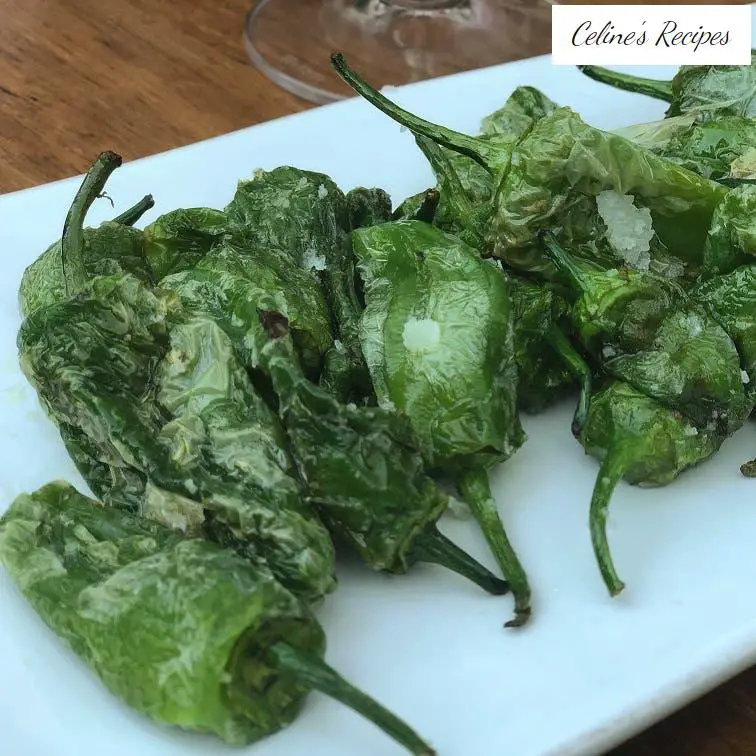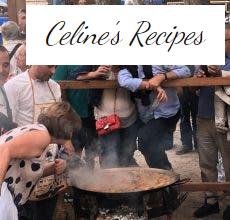Do you know the most famous peppers in Galicia? Padrón or Herbón peppers.
Almost the first of all, is to clarify the issue of the name of this well-known Galician product.
And it is that although it is known worldwide as “Padrón Pepper”, the correct denomination and protected by its DO (Denomination of Origin), is that of Herbón Pepper.
Officially, the “Herbón Pepper” was recognized as Protected Designation of Origin by the Order of the Ministry of Rural Affairs of July 1, 2009 , by which its Regulations are approved and the Provisional Regulatory Council is appointed.

His origins
It is in the small parish of Santa María de Herbón that everything began. In it is located the Herbón Convent, of the Franciscan order, whose monks brought from Tabasco (Mexico) the first seeds of these peppers, back in the 17th century.
The monks then began a process of varietal selection and collection, which continued with the transmission of the crop to the farmers in their area of influence. But always under exclusive control so that those seeds did not come out of the Convent’s area of influence.
It was not until the 1970s that the marketing of peppers, which had always been cultivated in a non-intensive way, began. Little by little, the most productive cultivation techniques arrived, such as greenhouses, which today cover the vast majority of production.
Peppers
The variety that is cultivated is of the species “Capsicum annuun”, with the particular ecotypes of the Herbón area, since this species is also the chili peppers and chili peppers of Latin America.
For fresh consumption, they are collected when they are not yet ripe, and are light green in color and between 3.5 and 5.5 centimeters long.
Its best known and identifying characteristic is that some specimens show a certain degree of itchiness, a clear example of the selection of varieties, since the original seeds produced hot peppers in their entirety. But we will talk about this topic a little later …
At the points of sale you will find them perfectly bagged and with the distinctive brand of their PDO clearly visible. This is synonymous with guarantee, flavor and authenticity.
Geographical scope
The production area covered by the PDO is framed by the municipalities of Padrón, Dodro and Rois, all in the province of A Coruña.
It is an area with an Atlantic influence, and made up of the valleys of the Ulla and Sar rivers. This provides it with special climatic conditions, which directly influence the cultivation of peppers.
The cultivation of this variety has spread to many other areas of Galicia, Spain and even Morocco, but in this case you will find that they are called “Padrón variety”, and in almost all of them it is not appreciated that any pepper gets to itch as the authentic “de Herbón”.
Production season
Each year, depending on the weather conditions, the production period may vary slightly. Normally, it starts in the month of May with the greenhouse peppers and in June the ones that are grown outdoors. Officially, the campaign usually ends on October 31.
The harvest is manual, with a selection of size and discarding the defective or damaged fruits. What is clear is that the authentic Herbón Peppers, you will only find them between the months of May and October.
An anecdote about this is that it is a tradition, every year, to send the first peppers of the season to the Casa Real. A detail that they always appreciate with an official note, praising the quality of this Galician product.
“Pementos de Padrón, uns pican e outros non … (some sting and others not) ”
It seems like the biggest secret in the world, and to explain it there are countless theories. What if the size, what if the shape, what if the color, many are the most varied explanations.
And the truth is that everything can influence. As we mentioned before, with the selection of varieties, little by little the plants have lost their ability to produce “capsaicin”, the natural substance that gives them itching. The same plant produces sweet and hot peppers, there is no pre-written pattern.
The production of this component depends as much on the genetic characteristics of the variety, as on the environmental conditions; temperature, humidity, composition of the soil, fertilization and state of development of the fruit at the time of picking, etc.
It is a defensive capacity that the plant has, to prevent its predators from consuming the fruits and destroying the seeds, and therefore the species. The nature do not stop surprising.
If we talk to a local from the Padrón area, they would tell us that with the advance of summer and temperatures, we will have more possibilities of biting. This is because with heat the production of “capsaicin” increases.
Therefore we cannot determine a guide of which are the ones that sting, but well, there is also the grace of the subject. In addition, the threshold of tolerance the spicy, is different in each person.
A trick that I can recommend is that you try the tip of the pepper first, and if it itches, then you discard it, if it is the case. Personally, I can stand the hotness of the peppers quite well, although I have to admit that some “rabid” have also touched me.
The best thing in these cases is to eat breadcrumbs, which will absorb the spicy flavor and help us through the bad time.

When it comes to cooking
The most common way of consuming them is with a simple frying, in olive oil and salting to taste once removed from the pan. Something simple, practical and without waiting too long.
We check that the usual thing is that they are fried directly out of the bag, with the tail attached. This is done so that later it is easy to eat them, holding them with your hands.
But I have to tell you that this is the most convenient, since the tail can add bitterness to the final flavor of the peppers. I know that it is a pain to remove that appendix, but surely you will agree with me later when eating them. Galician word…
In this video I leave you a Rechu Advice, from ” How to prepare Padrón Peppers ” and not die trying:
In addition to being a first class Tapa, they are a perfect garnish to accompany a good omelette, grilled meat, Galician tail, broken eggs with potatoes, etc.
If you come through Galicia you can find them everywhere, since they are a dish that triumphs and is highly requested by the hospitality clientele. In addition to traditional frying, thanks to the new generations of chefs, you can taste them baked, stuffed with Arzúa cheese, on toast with fried sardines, in tempura, and even jams and sweet preserves are already being made.
Surely you are already thinking of a recipe to eat them, so I recommend one that succeeds in my house and is on the Blog:
Raxo with potatoes and Padrón peppers (Herbón)
Raxo with potatoes and Padrón peppers
I hope that it has helped you to know a little more about this great Galician product, and you know, take a good look before buying them, that the authentic ones are the good ones.
Did you like it? Share it!
Share Tweet Pin it To print
Receive a weekly email with new recipes and yummy recommendations.
Think of Pixels SL as the owner of Recetasderechupete.com, it will use the data you provide in this form only to send you blog updates. We treat your data with respect. For more information see the Privacy Policy . You can change your mind at any time and unsubscribe by clicking on the footer of any email you receive from this website, or by contacting [email protected]. Yummy recipes use Mailchimp as a platform for sending emails. Mailchimp is covered by the EU-US Privacy Shield agreement, approved by the European Data Protection Committee. By submitting this form, you consent to your data being transferred to MailChimp for processing in accordance with its Privacy Policy .
If you liked this article you will like:

Edamame. What it is, how it is eaten and where it is bought

Caramel. What is its origin and history







